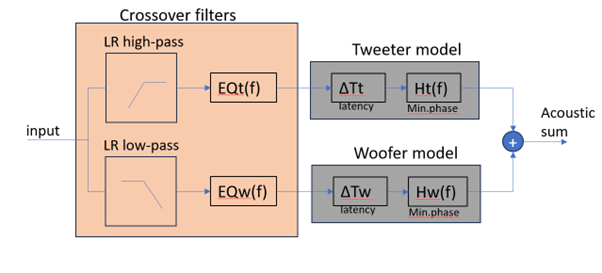That’s not quite right either.False, Does not work at all with e.g dome tweeters
Even in dome tweeters, the acoustic center still corresponds closely to the point where motion originates, the voice coil or diaphragm apex depending on geometry.
The dome’s curvature shifts the apparent center slightly forward, but it doesn’t change the fact that timing alignment is defined by the origin of motion, not the visible surface.
That’s why designers still measure the effective acoustic center of each driver when aligning systems, regardless of cone or dome type.
Just look at designs from Vandersteen or Thiel, both use dome tweeters yet employ sloped baffles to achieve proper physical time alignment.
That’s a different kind of delay, Group delay in low frequencies is mostly caused by the system’s acoustic loading and crossover slope, not by misalignment between drivers.Passive loudspeakers have a significant time delay for low frequencies anyway. If well designed, 10 ms..are really good

Group delay explanation and measurement (in audio)
Group delay is often confused with phase delay, and for good reasons. Here is a clear group delay explanation, and measurement using ARTA.audiojudgement.com
It affects the phase rotation of bass frequencies but has little to do with the physical time offset between the acoustic centers of mid and high drivers.
When we talk about time alignment, we’re referring to the synchronization of transient arrival across drivers, not low-frequency group delay.
A system can have excellent bass group delay and still suffer from poor time coherence if the drivers are not physically aligned.
That’s true for active systems, but that’s a different design philosophy.Of course, an active loudspeaker with a FIR filter transmits an input signal with almost no time delay (take a look at the group delay measurement of the loudspeakers). Talk to Neumann in Berlin; they have perfected this technology.
P.S
If anyone is interested, this explains very well where the acoustic center is defined.

P.P.S
They make amazing woofers too
FIR correction can linearize phase and group delay very effectively, but it does so through digital signal processing, not through acoustic geometry.
In passive designs, the acoustic alignment of the voice coils and the natural time behavior of the drivers still define coherence at the source.
Digital correction is impressive, but it’s a separate approach, one that compensates after the conversion, not through the mechanical integrity of the system itself.
Both methods can work beautifully when executed well; they just solve the problem from opposite ends.
















